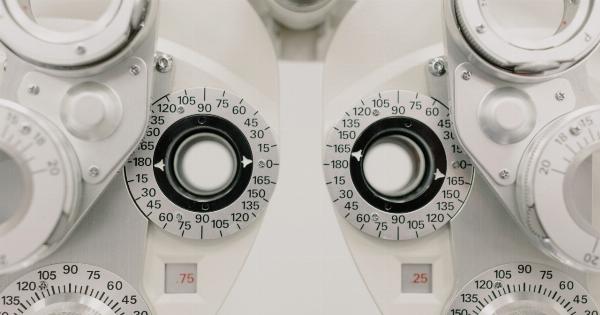Glaucoma and macular degeneration are two common eye disorders that can significantly impact a person’s vision. In order to better understand these conditions, it is important to familiarize ourselves with their visual representations.
This article aims to provide a visual overview of glaucoma and macular degeneration, highlighting their key characteristics, symptoms, and progression.
Glaucoma: The Silent Thief of Sight
Glaucoma is a group of eye diseases that gradually damages the optic nerve, leading to irreversible vision loss.
Often referred to as the “silent thief of sight,” glaucoma typically does not exhibit noticeable symptoms in its early stages, making regular eye examinations crucial for early detection.
1. Open-Angle Glaucoma: This is the most common form of glaucoma, accounting for 90% of all cases. In its early stages, open-angle glaucoma does not usually cause any noticeable symptoms.
Over time, however, peripheral vision gradually deteriorates, leading to tunnel vision or complete loss of vision if left untreated.
2. Angle-Closure Glaucoma: This type of glaucoma occurs when the iris blocks the drainage angles of the eye, resulting in increased eye pressure.
Angle-closure glaucoma can cause severe symptoms, such as eye pain, headache, blurred vision, halos around lights, and even nausea and vomiting.
3. Normal-Tension Glaucoma: Unlike other forms of glaucoma, normal-tension glaucoma occurs with normal eye pressure levels. It is characterized by optic nerve damage and visual field loss without elevated pressure.
Symptoms may include tunnel vision, difficulty adjusting to low light, and reduced contrast sensitivity.
Macular Degeneration: Deterioration of the Retina
Macular degeneration is a progressive eye condition that affects the macula, the central part of the retina responsible for sharp and detailed vision.
It is a leading cause of vision loss among older adults, gradually impairing the ability to see objects clearly.
1. Dry Macular Degeneration: This form of macular degeneration is characterized by the accumulation of yellow deposits called drusen beneath the macula. As drusen increase in size and number, central vision becomes blurred or distorted.
Dry macular degeneration progresses slowly and does not usually cause sudden vision loss.
2. Wet Macular Degeneration: Wet macular degeneration occurs when abnormal blood vessels form beneath the macula and leak fluid or blood, leading to rapid and severe vision loss.
It often causes a dark or empty area in the center of the vision, affecting the ability to read, drive, or recognize faces.
Visual Representations: Glaucoma vs. Macular Degeneration
1. Glaucoma Visual Representation: When representing glaucoma visually, it is important to highlight the loss of peripheral vision, which is a characteristic feature of this condition.
Creating a diagram that shows normal vision compared to glaucoma-induced tunnel vision can effectively convey the impact of the disease. Additionally, including images of elevated eye pressure measurement and optic nerve damage can enhance understanding.
2. Macular Degeneration Visual Representation: To represent macular degeneration visually, it is essential to focus on central vision impairment.
Utilizing images that demonstrate the progression of macular degeneration from clear central vision to the presence of drusen and finally to distorted or absent central vision can help individuals visualize the effects of the condition. Including images showing the growth of abnormal blood vessels in wet macular degeneration can further enhance comprehension.
Recognizing Symptoms and Seeking Treatment
In both glaucoma and macular degeneration, early detection and treatment can significantly slow down the progression of the diseases and prevent further vision loss.
It is crucial to be aware of the common symptoms associated with these conditions and seek immediate medical attention if any unusual changes in vision occur.
Remember, regular comprehensive eye examinations are key to detecting these eye disorders at their earliest stages, even before symptoms become noticeable.
If you are at a higher risk due to factors such as age, family history, or certain medical conditions, discuss with your eye care professional about the appropriate frequency of eye examinations.
Conclusion
Understanding the visual representations of glaucoma and macular degeneration is essential in comprehending the impact of these eye conditions on an individual’s vision.
Glaucoma silently steals peripheral vision, while macular degeneration progressively damages central vision. By recognizing the symptoms, seeking regular eye examinations, and adhering to treatment plans, individuals can take proactive steps towards preserving their sight.



























